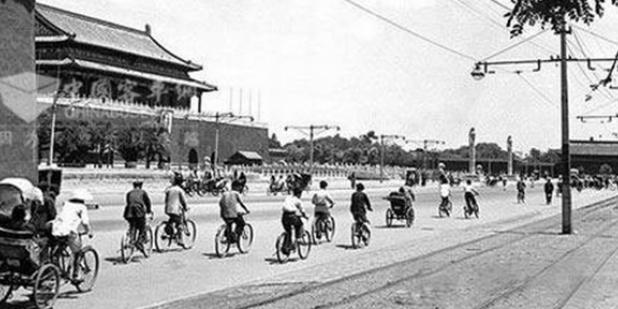Happy Lunar New Year from the USC US-China Institute!
A City of Workers, A City for Workers? Beijing Urban Space in the 1950s
UCLA Center for Chinese Studies hosts a talk with Fabio Lanza.
Where

Immediately after Beijing’s “peaceful liberation” in 1949, Chinese planners and leaders conjured up the idea of a capital city that could fulfill three different but theoretically inseparable functions: it should be a productive city, with a sizeable modern industrial proletariat; it should host a vast centralized bureaucracy; and it should be remade into a more perfect structure, in which the needs of the people (the newly industrialized working masses) could be finally satisfied and the people themselves remade into new socialist individuals. Documents of the Beijing government in the 1950s indicate that these three functions proved to be in the end incompatible. Socialist “city construction” became realized in a form of and urban modernization that was antithetical to any radical change in the lives of the working people and to any step towards a more equalitarian organization of society. While in the 1950s Beijing was indeed being transformed into a city of workers, it was not becoming a city for workers.
This presentation traces the increasing distance, through the 1950s, between the projects of the planners and practices at street level, showing how the contradictions of Beijing’s urban space were intrinsic to some of the basic concepts that animated the early PRC, such as “development,” “modernization,” and “production.” But it also illustrates how the city government (and Beijing residents) never stopped trying to solve these tensions, leading to the creation of new forms of urban organizations, from the danwei in the early 1950s to the urban communes of the Great Leap Forward.
Fabio Lanza (Ph.D. Columbia University, 2004) is associate professor of modern Chinese history in the Departments of History and East Asian Studies of the University of Arizona. His main research interests are political movements and urban history of twentieth-century China. He is the author of Behind the Gate: Inventing Students in Beijing (Columbia University Press, 2010) and co-editor (with Jadwiga Pieper-Mooney) of De-Centering Cold War History Local and Global Change (Routledge, 2013). He has recently completed a manuscript on Maoism, Asian Studies and intellectual activism in the U.S. and France and has just started a new project on Beijing urban space under Maoism.
Featured Articles
We note the passing of many prominent individuals who played some role in U.S.-China affairs, whether in politics, economics or in helping people in one place understand the other.
Events
Ying Zhu looks at new developments for Chinese and global streaming services.
David Zweig examines China's talent recruitment efforts, particularly towards those scientists and engineers who left China for further study. U.S. universities, labs and companies have long brought in talent from China. Are such people still welcome?






